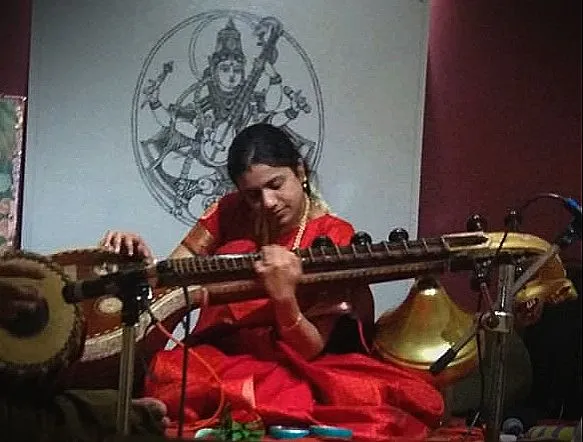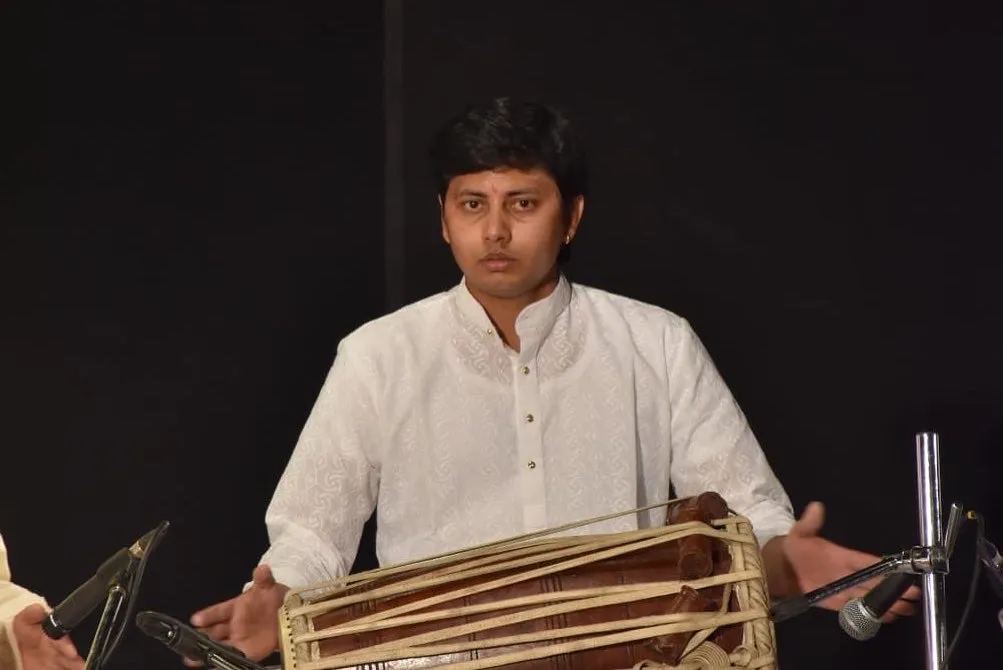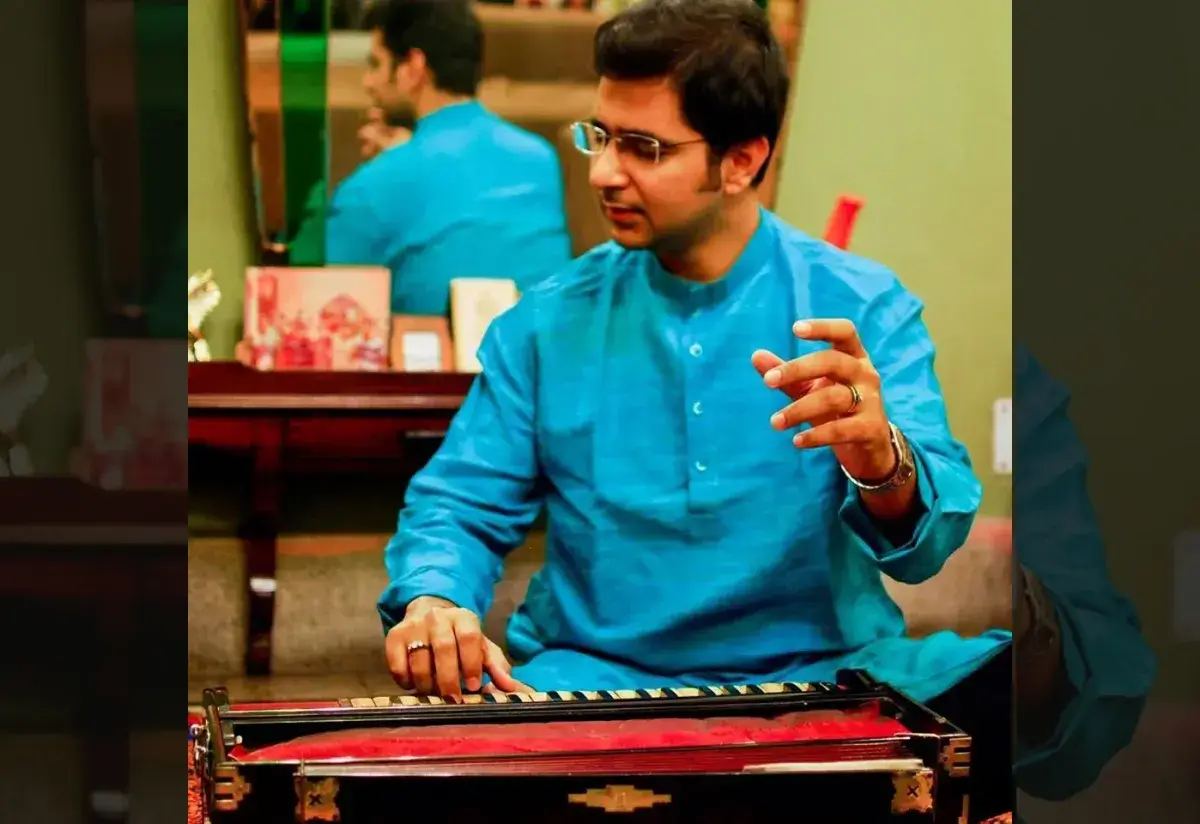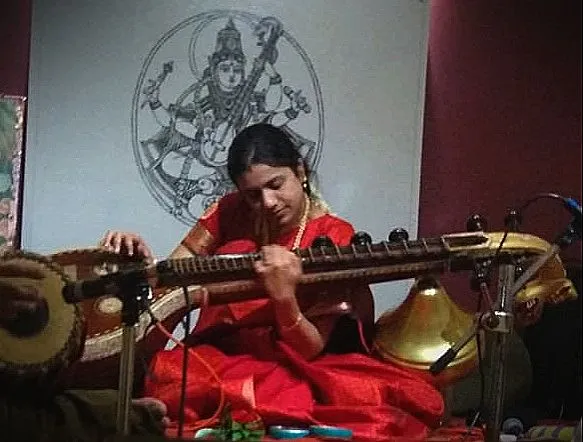Semi Classical Music – The Heart of Indian Music
From the rich and deep classical music lineage, one offshoot that comes out is the Light Classical Music or Semi classical Music. Semi-classical music uses the basic structure of classical music but takes the leverage to blend the different ragas. It even deviates from the rigid path to beautify the melody and make it more appealing to the mass.
Banking on vocal prowess and shifting the emphasis from the raga to the lyrics that harped on emotion (bhav), light classical music found quick acceptance among performers and admirers alike. In many regions of India, semi-classical is also called bhav sangeet.
Types of Semi Classical Music
The various types of Semi-classical music involve -
1. Thumri
2. Dadra
3. Bhajan
4. Ghazal
5. Chaiti
6. Hori
7. Kajri
8. Tappa
9. Sangeet Natya
10. Qawwali
11. Music in Indian Cinemas
1. Thumri
Thumri is all about tending to emotions like love and devotion. It tugs at the heart strings and leaves a lingering effect. It allows the artist to bend the rules of raga to bring out feelings like love, longing, or devotion. Have you heard “Hamri Atariya Pe Aao” in Begum Akhtar’s voice? It has a kind of magical pull that is hard to resist. Another classic is “Baju Band Khul Khul Jaye”, famously sung by Gauhar Jan. It blends delicate lyrics with lilting melody. These songs reflect what Thumri does best—telling emotional stories through music that feels both classical and deeply personal.
Learning Thumri turns a technically skilled singer into a soulful storyteller. It also acts as an ice-breaker for new practitioners before they start more elaborate compositions of Khayal or Dhrupad.
2. Dadra
Dadra is named after the Dadra taal (a 6-beat rhythmic cycle), in which it is most commonly performed. The predominant themes include romantic or devotional. The compositions are based on Khamaj, Kafi, Bhairavi, and Pilu ragas. The lyrics are typically in Hindi, Braj, or Urdu and are rich in everyday imagery, often expressing emotions like love, separation, mischief, or longing. A popular example is “Na Ja Balam Pardes” sung by Gauhar Jan, which showcases the emotional nuance and melodic grace of Dadra.
Legends like Begum Akhtar, Shobha Gurtu, and Girija Devi have given the genre its lasting charm through heartfelt, soulful renditions that connect easily with audiences.
For singers, specializing in Dadra helps develop emotional expression, clarity of lyrics, and control over slower, expressive taans and ornamentations.
3. Bhajan
Bhajan is a devotional form of semi-classical music that combines spiritual depth with melodic simplicity, making it deeply moving and widely loved. Composed to praise deities or express inner devotion (bhakti), Bhajans often use easy-to-follow tunes based on ragas like Bhairav, Yaman, Bhairavi, and Desh, and rhythms like Keharwa and Dadra. The lyrics are usually in Hindi or regional languages and are rich in spiritual emotion, often drawn from the works of poets like Mirabai, Tulsidas, and Kabir. Timeless Bhajans like "Raghupati Raghav Raja Ram", "Vaishnav Jan To", and "Payoji Maine Ram Ratan Dhan Payo" remain popular across generations. Legends like Pt. D.V. Paluskar, Anup Jalota, Lata Mangeshkar, and Kumar Gandharva have elevated the art of Bhajan singing.
For a singer, specializing in Bhajans develops emotional expression, clarity in diction, and connection with audiences. It also strengthens the voice and enhances the ability to convey devotion and peace through music. With its spiritual message and wide appeal, Bhajan singing is not only an art form—it’s a form of inner meditation through music.
4. Ghazal
Originating from Persian and Urdu literature, Ghazals are composed with a rich lyrical structure, where each couplet (sher) stands as a thought on its own, yet connects to the central theme. Musically, Ghazals draw from ragas like Yaman, Bhairavi, Pilu, and Kafi, and are often set to light rhythmic cycles like Dadra or Keharwa, allowing the words to take center stage. Iconic Ghazals such as “Kagaz ki Kashti” by Jagjit Singh or “Chupke Chupke Raat Din” by Ghulam Ali have captivated generations. Iconic Ghazal singers such as Mehdi Hassan, Begum Akhtar, Jagjit Singh, and Hariharan have had major contributions in the refinement and popularity of Ghaals..
Learning and specializing in Ghazals helps singers develop poetic sensitivity, voice control, emotional nuance, and excellent diction. It teaches how to “feel” a song deeply and deliver it with grace. For any vocalist, Ghazal is not just a genre—it’s a journey into the soul of poetry through music.
5. Chaiti
Chaiti comes from the folk music traditions of Uttar Pradesh and Bihar. The word Chaiti is related to Chaitra or Chait month (March-April) in Hindu calendar. It marks the spring season. With themes revolving around love, devotion, and nature, especially stories of Radha-Krishna, Chaiti carries the freshness of the season in both lyrics and melody. It is typically composed in light ragas like Kafi, Bhairavi, or Desh, and set to rhythmic cycles such as Keharwa or Dadra, which lend it a gentle, flowing character. The lyrics are usually in Awadhi or Bhojpuri, rich in rural imagery and emotional color. A well-known Chaiti is “Ho Rama Chait Bairan Bhayil”, popularized by Girija Devi, who was a leading figure in reviving and preserving this genre.
Artists like Shobha Gurtu and Chhannulal Mishra have also brought Chaiti into the semi-classical mainstream with expressive and nuanced renditions.
For singers, learning Chaiti develops regional diction, emotional subtlety, and the ability to express folk flavor within a classical framework. It deepens a vocalist’s connection with cultural roots and adds a vibrant, seasonal beauty to their musical palette.
6. Kajri
Kajri is a soulful semi-classical form that blossoms during the monsoon season, evoking the emotions stirred by rain—longing, love, and the pangs of separation. Originating from the Awadh and Bhojpur regions of Uttar Pradesh and Bihar, Kajri is traditionally sung by women awaiting their beloved’s return during the rains. Musically, it is set in light ragas like Kafi, Bhairavi, Desh, and Pilu, and is typically performed in taals like Dadra and Keharwa, which complement its lilting and folk-inspired feel. The lyrics, often in Awadhi or Bhojpuri, are deeply expressive and filled with rural imagery. “Barsan Laagi Badariya”, sung by Girija Devi is a popular Kajri.
Other stalwarts of Kajri include Shobha Gurtu, Chhannulal Mishra, and Pt. Rajan & Sajan Mishra, who have kept this tradition alive with powerful performances.
For singers, specializing in Kajri enhances emotional depth, folk-classical blending, and mastery over seasonal ragas.
7. Hori
Hori is traditionally sung during the festival of Holi. The highlights of these compositions include colors, and divine love of Krishna and Radha. Rooted in the cultural heartland of Uttar Pradesh, Hori blends folk themes with classical structure, and is often set to light ragas like Kafi, Khamaj, Bhairavi, and Desh. The rhythm is usually based on taals like Deepchandi, Keharwa, or Dadra, lending it a joyful, swinging character. The lyrics are often in Braj Bhasha, rich with references to Holi festivities, teasing banter, and divine romance. A well-known Hori is “Khelo Hori Giridhari” by Girija Devi, which beautifully conveys the mischief and devotion woven into the genre.
Notable exponents of Hori include Shobha Gurtu, Kumar Gandharva, and Chhannulal Mishra, who infused classical finesse into these folk-rooted compositions.
For singers, learning Hori sharpens the ability to express playfulness, emotion, and rhythmic agility. It improves command over seasonal ragas, language nuances, and dramatic storytelling—making it an exciting and rewarding addition to any vocalist’s repertoire, especially those interested in festive or devotional music.
8. Tappa
Tappa is a vibrant and technically demanding semi-classical music form known for its fast pace, intricate ornamentation, and rhythmic energy. It used to be sung by the camel riders in Punjab. Later in the 18th century, Shori Miyan adapted this into its classical form. Unlike other semi-classical styles, Tappa is highly dynamic and filled with taans, gamak, murkis, and swift note patterns that demand strong vocal agility. It’s usually set in ragas like Kafi, Khamaj, and Bhairavi, and taals such as Punjabi and Teentaal. A popular Tappa is “Baaje Re Mor Shankh”, showcasing the playful yet complex style of the genre.
Renowned exponents of Tappa include Pt. Laxmanrao Pandit, Pt. Gokulotsav Maharaj, and Girija Devi, who brought both classical depth and folk flavor into their renditions.
For singers, learning Tappa sharpens technical control, speed, and clarity in voice. It trains the throat for complex taans and strengthens breath control needed fast-paced classical and semi-classical forms.
9. Sangeet Natya
When it comes to narrating the saga of musical traditions of India, it would be incomplete if we didn’t talk about Sangeet Natya. Music has been a constant for stage performances since its very first mention as Gana.
Later, it formed the basis of narration and storytelling in diverse forms. And one of them is Sangeet Natak. The predecessor of theatrical drama, Sangeet Natak enthralled the audience since the mid-seventeenth century.
The major themes of these musical dramas used to be stories from the Indian epic – Mahabharata. They were performed on stage as well as open-air public events such as fairs.
Every region has had its share of contributions to the evolution of a more elaborate theatrical way of storytelling, which further upgraded to motion pictures (cinemas) with the advent of movie cameras.
10. Qawwali
Qawwali is rooted in Sufi traditions, designed to invoke spiritual ecstasy and connect the listener with the divine. Performed in Urdu, Persian, Hindi, or Punjabi, Qawwali combines poetry, rhythm, and melody to convey themes of divine love, longing, and surrender. A typical Qawwali begins with a slow-paced alap or nagma, gradually building into fast, energetic sections layered with rhythmic clapping, call-and-response patterns, and expressive vocal improvisations. It is usually based on simple ragas and rhythmic cycles like Keharwa, Teen Taal, and Dadra. The structure is flexible, allowing space for emotional build-up and spontaneous expression.
Iconic Qawwalis like “Bhar Do Jholi Meri” and “Tajdar-e-Haram” have become legendary through the voices of Nusrat Fateh Ali Khan, Sabri Brothers, and Aziz Mian.
For singers, learning Qawwali enhances breath control, vocal stamina, group coordination, and emotional depth.
11. Music in Indian Cinemas
Music has always been the soul of Indian cinema—be it Hindi or regional. From royal courts and gharanas to theatres and cinema screens, music evolved alongside storytelling. With sound films in 1931, classical and folk-inspired music became central to Bollywood songs. Icons like K.L. Saigal, Naushad, Lata Mangeshkar, and Mohammed Rafi built Hindi cinema's golden musical era.
But the regional films contributed their own flairs. Bengali cinema, with legends like S.D. Burman and Hemanta Mukherjee, wove Rabindra Sangeet and folk tunes into film scores.
Telugu cinema featured maestros like Ghantasala and Ilaiyaraaja (also a Tamil icon) blending Carnatic and modern styles. Malayalam film music, known for lyrical depth, flourished under Yesudas, Raveendran, and Johnson Master. Kannada, Marathi, and Punjabi films also nurtured their own rich musical traditions. Across India, film music remains inseparable from cinematic success—a unifying art that continues to evolve while honoring its deep cultural roots.
In Conclusions…
Semi-classical music was perhaps the starting point where classical music started merging with other forms to create a genre with a wider appeal for the masses. It democratized music for the listeners as well as for the new learners.
Semi-classical music did not need a very discreet understanding of or inclination towards classical music. It gave rise to a cult of music that was hummable and pulled at the heartstrings of the listeners. And it simply hails glory to itself even to the present times. If you are interested in learning any of the above forms of semi classical music, please explore online music classes.














